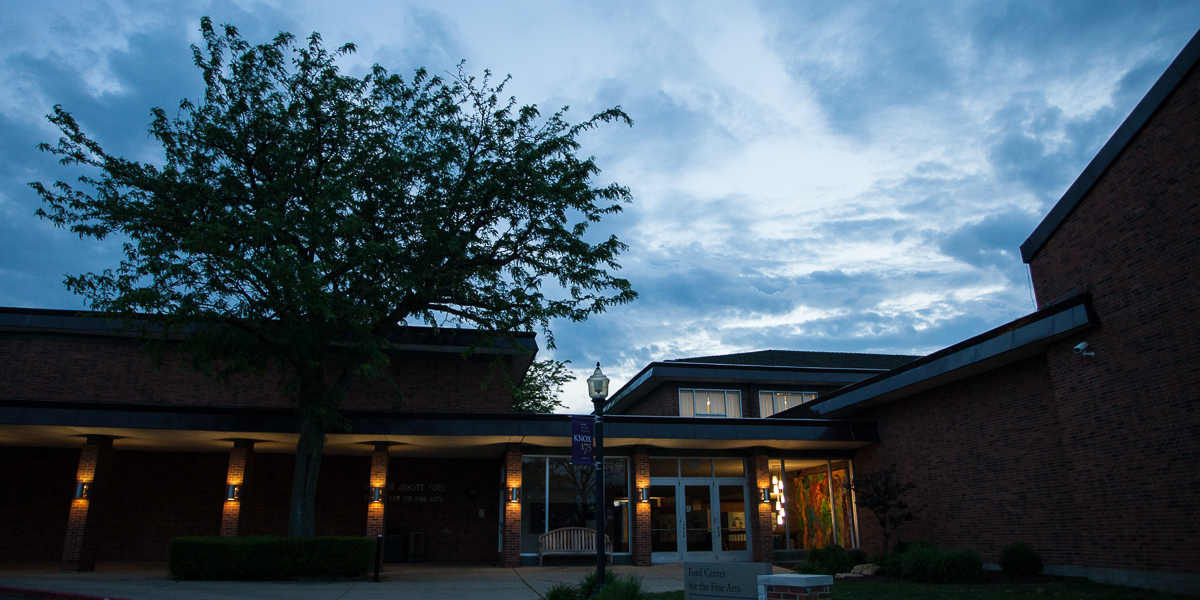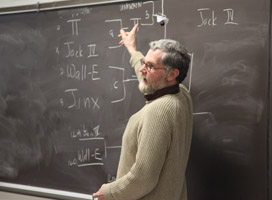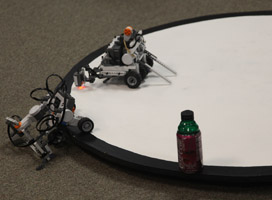

Venture Boldly

Adriana Colindres
Features Editor
2 East South Street
Galesburg, IL 61401

by Paige Anderson '14
Five robots entered, but only one emerged victorious. This wasn't some gladiatorial match of the distant future. It was the Knox College Department of Computer Science's ninth annual Sumo Robot Competition.
Knox students, professors, and members of the Galesburg community packed a classroom in the Umbeck Science-Mathematics Center Feb. 25 to watch teams battle it out.
In the competition, robots fought, two at a time, to find a weighted can and push it out of the 4-foot-wide "ring of death" before the opposing robot did.
Students assembled the small, programmable robots by using Lego Mindstorms kits. John Dooley, Knox professor of computer science, started the competition in 2003 to help teach the integration of computer programming and mechanical control systems.
In the end, senior Jonathan Pierce-Ruhland's robot -- named Pi -- was the undefeated victor. According to Pierce-Ruhland, "weight and simplicity" were the keys to his victory.
During each match, Pi searched the ring with an ultrasonic sensor until it found an object -- either a can or another robot. Upon identifying an object, Pi would continue pushing until its light sensor saw the ring's black edge. Then Pi would stop.
This straightforward strategy allowed Pi to win with brute force and speed.
Mass was very important in the competition. Most of the robots had a similar amount of power, so when they locked in combat, the weightier robot usually was able to push the other out of the ring. Second-place winner Josh Wood, a junior who attributed his achievement to speed and luck, said that the thing he would change about his robot would be to "add a lot more weight."
 The sumo robot contest attracted several young fans -- children who were laughing, talking, and cheering for their favorites. Senior Joyce Lee said the event is a great way for "kids to develop an interest in science."
The sumo robot contest attracted several young fans -- children who were laughing, talking, and cheering for their favorites. Senior Joyce Lee said the event is a great way for "kids to develop an interest in science."
Ten-year old Abbey Davis went to the competition with her dad, and she enjoyed what she saw. "I liked it when the robots ran into one other and kept going," she said.
After Pi's win, four of the robots and two cans were placed in the ring for a final confrontation. As the crowd cheered and yelled, the four robots found and pushed one another until finally all the cans were gone and one robot was left.
Once again, Pi was victorious.
Photos by Honor Heymann '14
Published on March 08, 2011